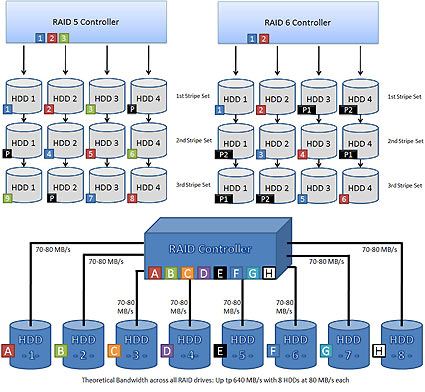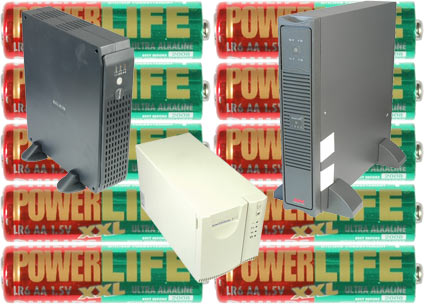RAID Scaling Charts, Part 3: 4-128 kB Stripes Compared
Features
By
Patrick Schmid
published
Tom's Hardware Articles Related To RAID
Part 1 and 2 of our RAID Scaling Charts talk in detail about RAID 0, 1, 0+1, 5 and 6.
Apart from our RAID Scaling Charts, we provided a number of articles related to RAID earlier this year:
- RAID Recovery: The Data Knight Kroll Ontrack to the Rescue
In the event of catastrophic hard drive failure, only professional data recovery can help. During a visit to Kroll Ontrack we gained insight into how data can even be restored from a crashed RAID array. - Parallel Processing, Part 2: RAM and HDDs
The second part of this article series deals with the differences between single and dual channel memory, and the performance benefits of using RAID with two or even four hard drives. - The RAID Migration Adventure
All RAID arrays aren’t created equal, and as a result you may not be able to keep using your existing configuration when you update your platform. - Opting for RAID Level Migration
Many SATA systems allow you to upgrade to RAID. We used hard drives with Intel and Nvidia chipsets to see how well RAID level migration could work. Our goal was simply to make storage more reliable. - Cheap RAID Ravages WD Raptor
A quick hard drive such as Western Digital’s Raptor noticeably accelerates your PC, but is it still the best choice for enthusiasts? - RAID Boxes Run Riot
We looked at two RAID-based external storage appliances from easyRAID and Sans Digital. They deliver increased performance, but with annoying noise levels. - The 2.5" vs. 3.5" RAID Challenge
- Meet Drobo: A Data-Saving Robot
Conventional RAID solutions can be expensive, difficult to handle and hard to upgrade. Data Robotics offers you an alternative: Drobo, a robot that will fix your storage problems. - Acard’s Small Business RAID Appliance
Acard’s rackmount storage appliance uses SATA hard drives, but connects to the host system with an UltraSCSI interface. Is this the right mix for small businesses? - RAID on Rye
Who said only PCs could be modded, and that server designs had to be boring? THG sits down with designer Dave Goeke, who discusses his pride and joy: a Linux file server with RAID storage in a working toaster. Or is it really a toaster in which you can store your files?
A UPS unit is extremely important to avoid data loss due to power outages.
Stay On the Cutting Edge: Get the Tom's Hardware Newsletter
Get Tom's Hardware's best news and in-depth reviews, straight to your inbox.
Current page: Tom's Hardware Articles Related To RAID
Prev Page RAID: A Quick Summary Next Page Stripe Size Discussion
Editor-in-Chief (2005-2006)
Patrick Schmid was the editor-in-chief for Tom's Hardware from 2005 to 2006. He wrote numerous articles on a wide range of hardware topics, including storage, CPUs, and system builds.

